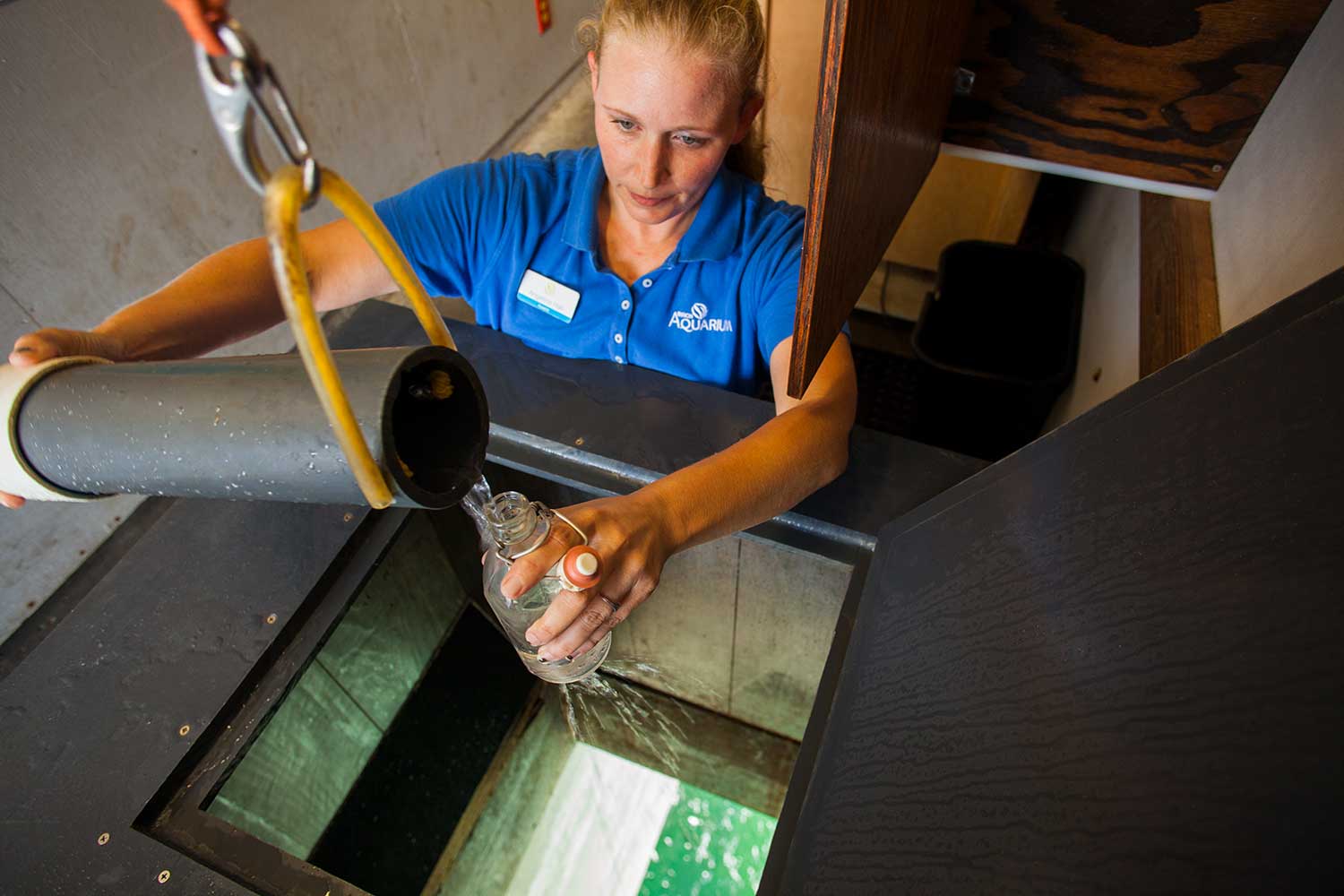The Future of Iconic Ocean Temperature Measurement Series to Be Considered
In public event, scientists will consider how and if the Shore Stations program should go on
By:
- Robert Monroe
Media Contact:
- Robert Monroe - scrippsnews@ucsd.edu
- Mario Aguilera - maguilera@ucsd.edu
Published Date
By:
- Robert Monroe
Share This:
Article Content

In August 2016, Birch Aquarium at Scripps aquarist Angelina Hall collects a seawater sample the same way as samples have been collected since 1916.
Scientists will convene Oct. 7 at Scripps Institution of Oceanography at UC San Diego to consider the future of one of the world’s longest continuous records of ocean conditions.
The Shore Stations Program based at Scripps coordinates a network of seawater temperature and salinity measurements along the California coast. Managers of the program, which observed the centennial of the first temperature measurement at Scripps Pier in August, will take up the question of how – and if – the program should continue into a second century as it is now and how it can be funded in the future. During the public symposium, scientists will also consider whether to maintain the program’s current measurement methods. Volunteers make measurements by hand at the network’s 10 stations in a manner unchanged since the beginning of the program.
“It’s important to periodically assess the purpose, methods, and effectiveness of all long-term measurement programs. We want to make sure that scarce public funding is used in the most efficient manner possible and that sampling protocols and resources are adequate for the job,” said Scripps oceanographer Reinhard Flick, principal investigator of the Shore Stations Program.
The symposium, “Is 100 years of Scripps Pier Data Enough?,” takes place from 8 a.m. to 1:30 p.m. at the Robert Paine Scripps Forum for Science, Society and the Environment on the Scripps campus. The event is free to the public but interested parties are asked to register ahead of time. Speakers will include scientists from NOAA and the California State University Moss Landing Marine Lab consortium.
The Shore Stations program has become a record of California climate made more precious by its longevity and consistency, surviving on a shoestring budget for much of its history.
The program is funded by the California State Parks Department of Boating and Waterways. It now includes 10 stations up and down the California coast that measure seawater temperature and salinity. Data from all the stations are sent to researchers at Scripps for processing and analysis. The record has been cited in dozens of research papers over the course of several decades and by the Intergovernmental Panel on Climate Change, which produces a periodic synthesis of global climate change research. Its consistency and long duration give scientific weight to the finding that 2014 and 2015 were among the warmest on record, thanks to a confluence of human-caused global warming, El Niño, and a mysterious “blob” of warm Pacific Ocean surface water that prevailed off the West Coast for more than a year.
Share This:
You May Also Like
Stay in the Know
Keep up with all the latest from UC San Diego. Subscribe to the newsletter today.



